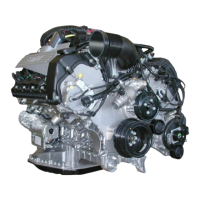New Generation N62 Engine Chapter 3 P.2
Course Contents/Background Material
© BMW AG, Service Training
Increases in engine output and engine torque, as well as optimi-
sation of the engine torque curve, are largely dependent on an
optimum engine volumetric efficiency over the entire engine
speed range.
Good volumetric efficiency in the lower and upper speed ranges
is achieved via long and short intake paths. Long air intake paths
ensure optimum volumetric efficiency in the lower to middle
speed ranges.
This optimizes the torque curve and increases the torque.
In order to optimize the power increase in the upper speed
range, the engine requires short air intake paths for better filling.
The air intake system has been completely reworked in order to
eliminate this inconsistency in terms of air intake path length.
The air intake system consists of the following components:
- Intake air ducts upstream of the air cleaner
- Air cleaner
- Intake pipe with HFM (hot-film air-mass flow sensor)
- Throttle unit
- Variable intake manifold
- Intake port

